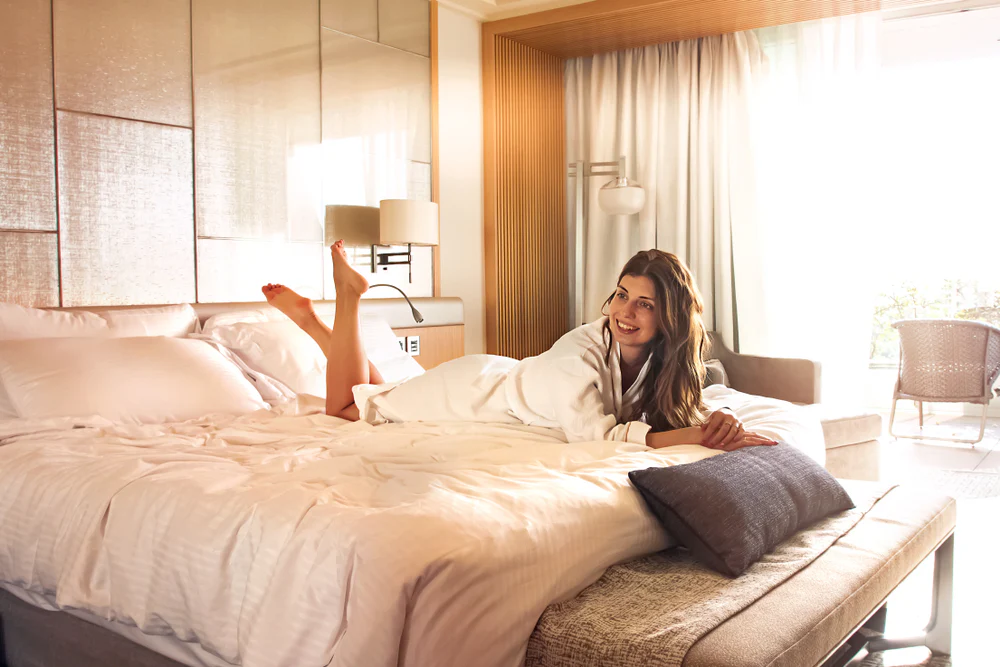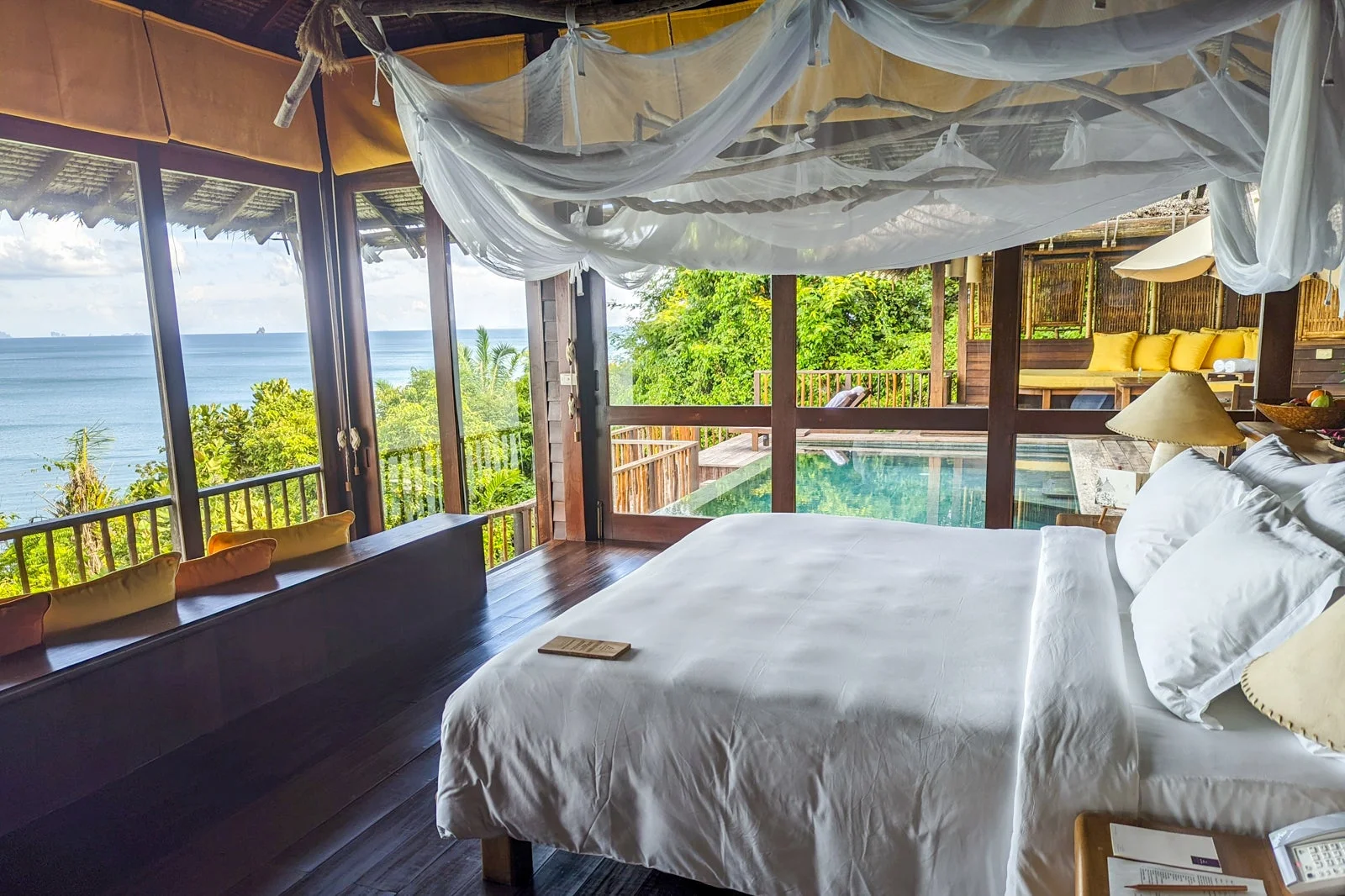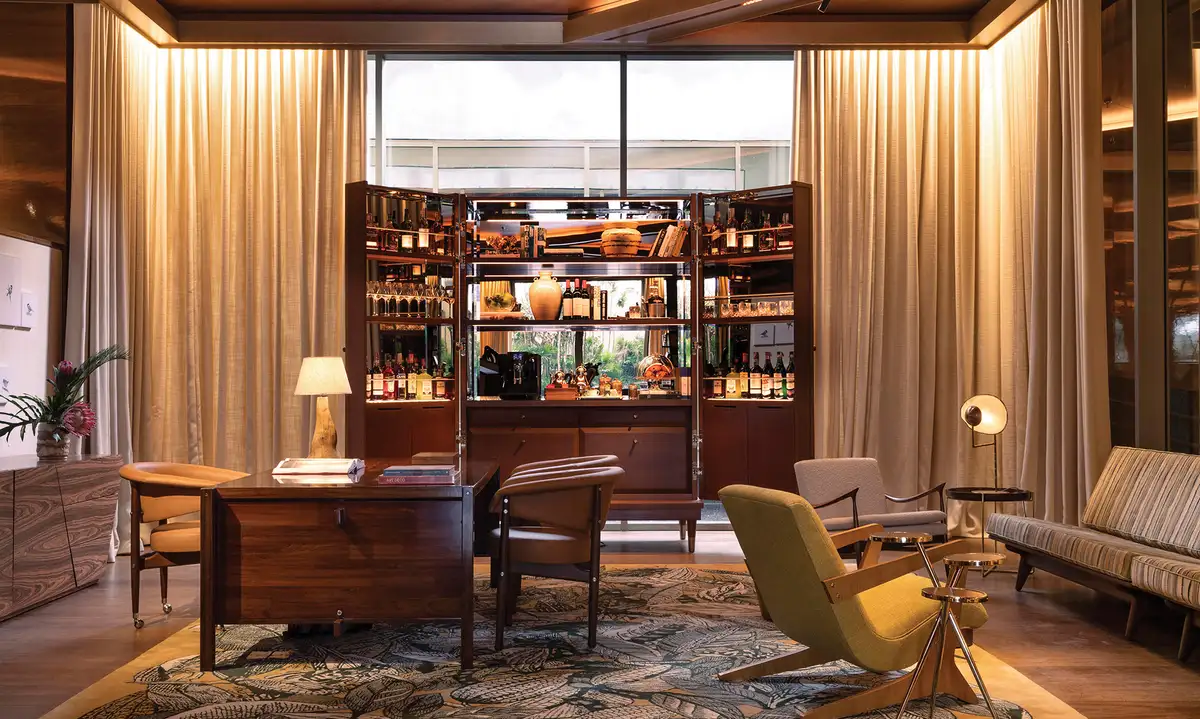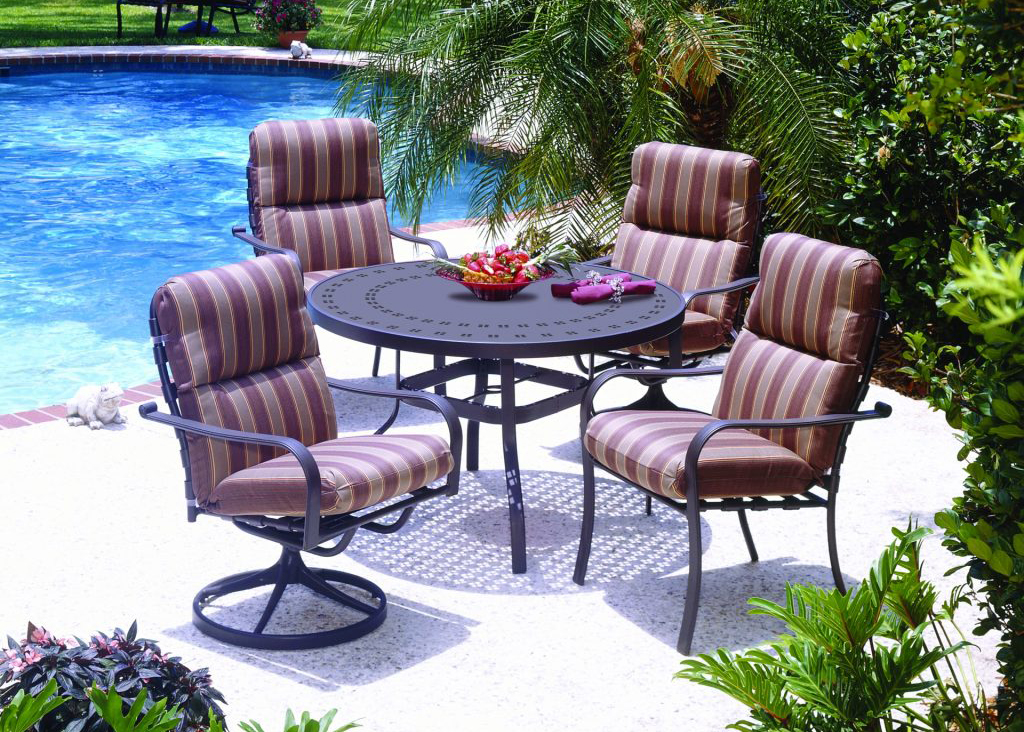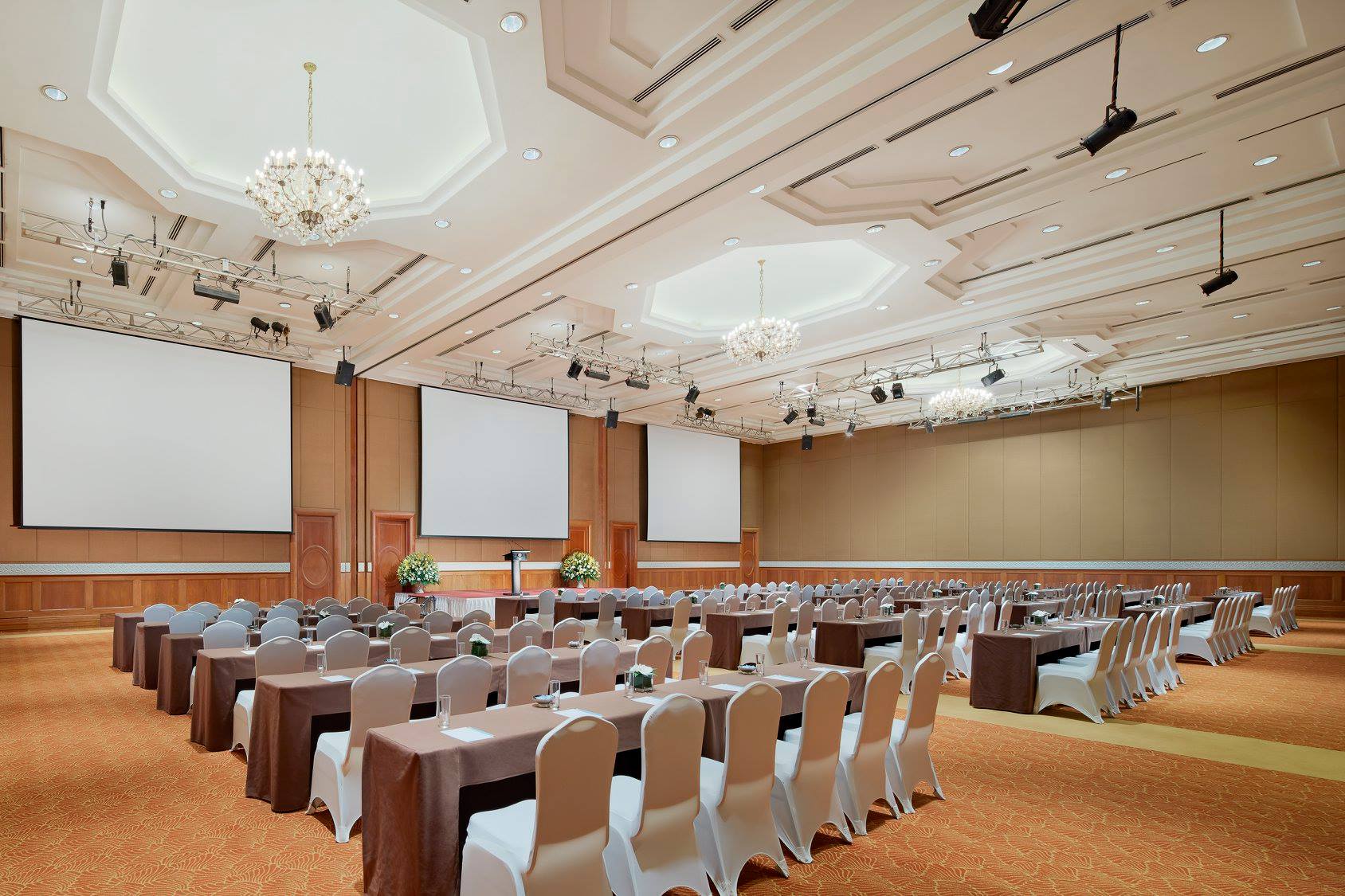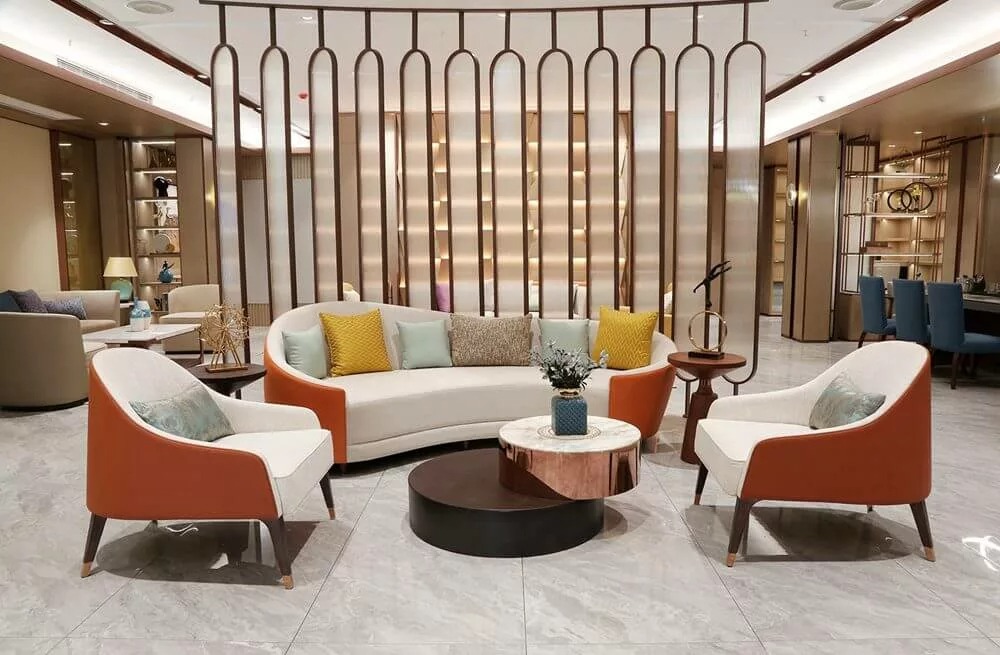Moisture-Resistant Material Technologies in Coastal Hotel Interiors
Thứ 4, 22/10/2025
Administrator
21
Designing interiors for coastal hotels requires balancing beauty with environmental resilience. Salt, humidity, and temperature shifts can deteriorate furniture and finishes over time. Moisture-resistant technologies are redefining durability without sacrificing aesthetics. In this article, Ngoc Hoang Anh explores advanced material solutions that preserve both elegance and longevity in luxury hospitality projects along coastal regions.
1. The Challenge of Coastal Environments
Seaside conditions accelerate wear faster than any other climate. Constant exposure to salt air, high humidity, and UV radiation weakens conventional materials and joints. Designers must anticipate these challenges through careful material selection, ensuring interiors maintain their appearance and function despite harsh surroundings.
Moisture resistance is not only about protection but also about maintaining guest comfort. When materials remain stable and hygienic, they preserve both physical and sensory quality throughout years of use.
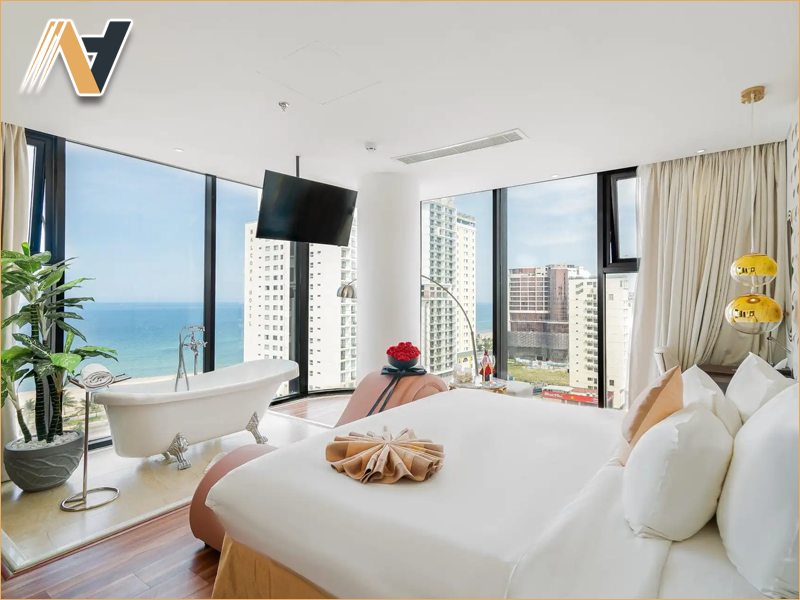
2. Engineered Woods and High-Pressure Laminates
Natural wood offers warmth and authenticity but is vulnerable to moisture. Modern technology allows designers to retain its aesthetic while improving resistance.
2.1 Engineered Wood Solutions
Engineered woods such as marine plywood and MDF with moisture-proof cores resist warping and swelling. These materials retain structural stability even in high humidity, making them ideal for furniture frames, wall panels, and cabinetry.
2.2 High-Pressure Laminates (HPL)
HPL combines layered kraft paper with resins under heat and pressure to create a dense, water-resistant surface. It withstands scratches and moisture better than natural veneer while offering diverse finishes that mimic wood, stone, or fabric textures.
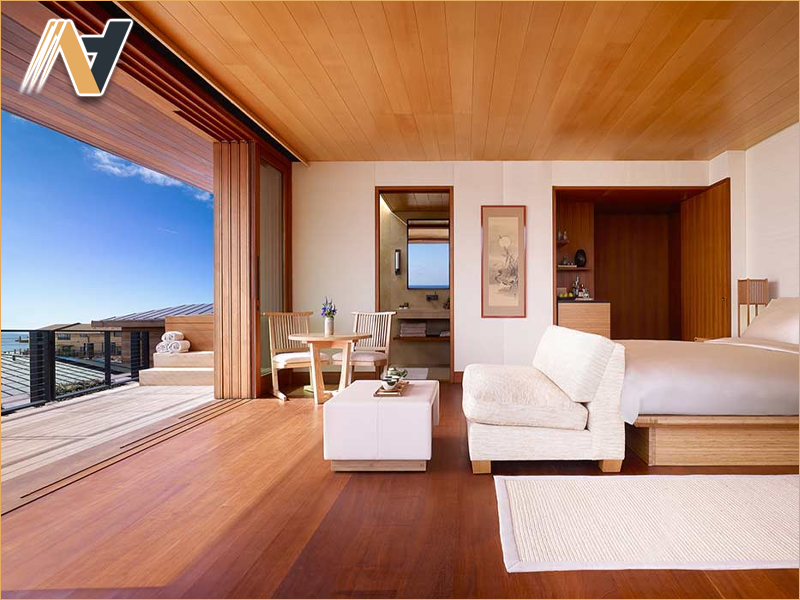
3. Metal and Composite Innovations
Metals and composites introduce structural integrity and modern aesthetics. Their performance depends on finishing techniques that prevent oxidation and corrosion.
3.1 Powder-Coated and Stainless Finishes
Stainless steel grades 304 and 316 are commonly used in coastal interiors for their rust resistance. Powder coating enhances protection while adding soft matte or textured effects that blend with warm materials like wood or rattan.
3.2 Aluminum and Composite Panels
Lightweight aluminum and composite claddings are ideal for moisture-prone zones. They combine rigidity with minimal maintenance and can be shaped to suit contemporary or organic designs.
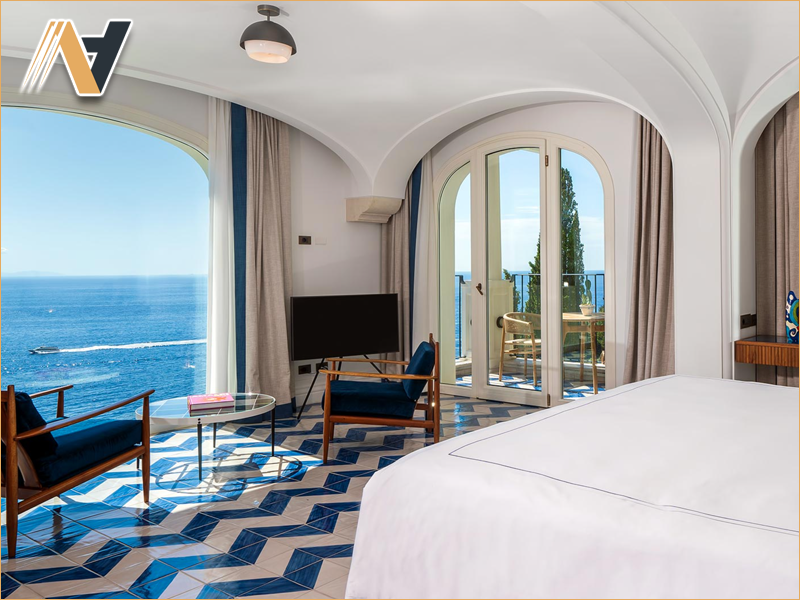
4. Upholstery and Soft Finishes
Textiles are often the first materials to show signs of humidity damage. Selecting performance fabrics ensures durability without compromising comfort.
4.1 Performance Fabrics and Waterproof Coatings
Moisture-resistant upholstery features synthetic fibers treated to repel liquids and resist mold. Fabrics with breathable waterproof membranes maintain comfort in humid conditions.
4.2 Quick-Dry and Anti-Microbial Cushions
Foams with open-cell structures allow air circulation, drying faster after exposure to moisture. Anti-microbial treatments prevent odor and bacterial growth, keeping lounge and poolside furniture fresh.
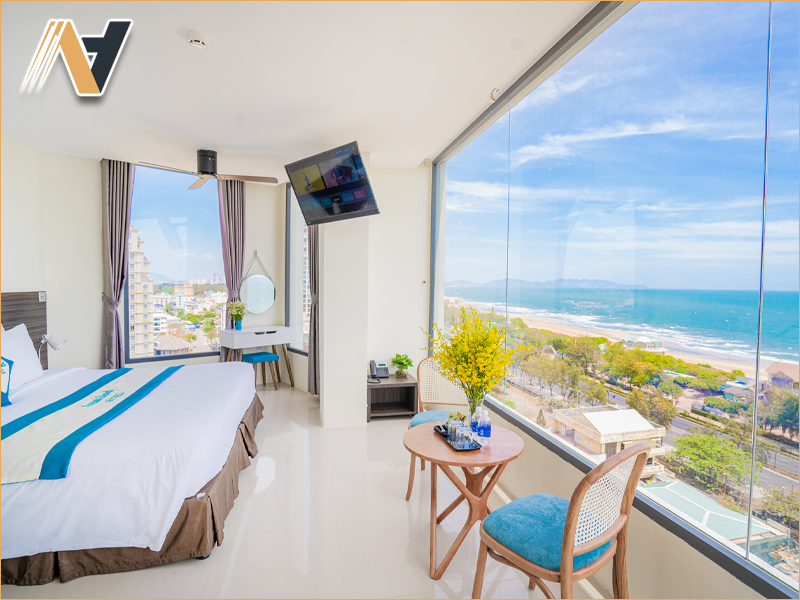
5. Design Integration and Aesthetic Harmony
Technical performance must align with design integrity. Moisture-resistant materials should blend seamlessly into the overall aesthetic rather than appear purely functional.
Layering materials such as combining treated wood with metal trims or stone-look laminates creates balance between warmth and resilience. Thoughtful detailing ensures protection remains invisible, letting craftsmanship and comfort take center stage.
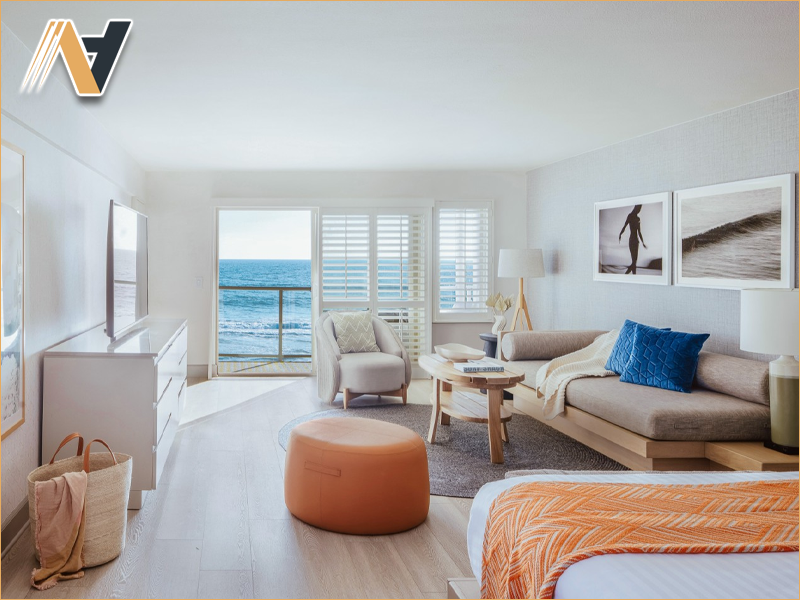
6. Conclusion
Moisture-resistant technologies redefine coastal hospitality design, combining science and sophistication. Engineered woods, advanced laminates, treated metals, and smart fabrics allow hotels to withstand challenging environments while maintaining timeless beauty.
For hospitality projects seeking durable, elegant, and climate-adaptive interiors, Ngoc Hoang Anh provides professional Vietnam hotel furniture OEM solutions that merge technical innovation with refined craftsmanship.
Contact us today for professional consultation and tailored production support for your hotel project.
-----
NGOC HOANG ANH TRADING COMPANY LIMITED
Tax Code: 3702874413
Address: No. 288/28/10 Huynh Van Luy Street, Zone 7, Phu Loi Ward, Ho Chi Minh City, Vietnam
Warehouse: No. 1/91, Thuan Giao 02 Street, Binh Thuan 2 Residential Quarter, Thuan Giao Ward, Ho Chi Minh City, Vietnam
Phone/Whatsapp/Wechat: +84342076666
Email: info@ngochoanganh.com.vn




